The battery is one of the most important features of any electric scooter. Not only it determines the device mileage and power (together with other features such as the motor), but it is also crucial to determine the electric scooter life span and durability. No battery has an infinite life in terms of charging cycles, and when your battery is dead and you can’t replace it, your e-scooter will be also useless.
So, the market offers different electric scooter batteries which quality will be important in determining the overall quality of your e-scooter. Their main function is to propel the electric motor but they also provide power for the whole set of electric features present on your electric scooter (LCD display, electric brakes, etc…).
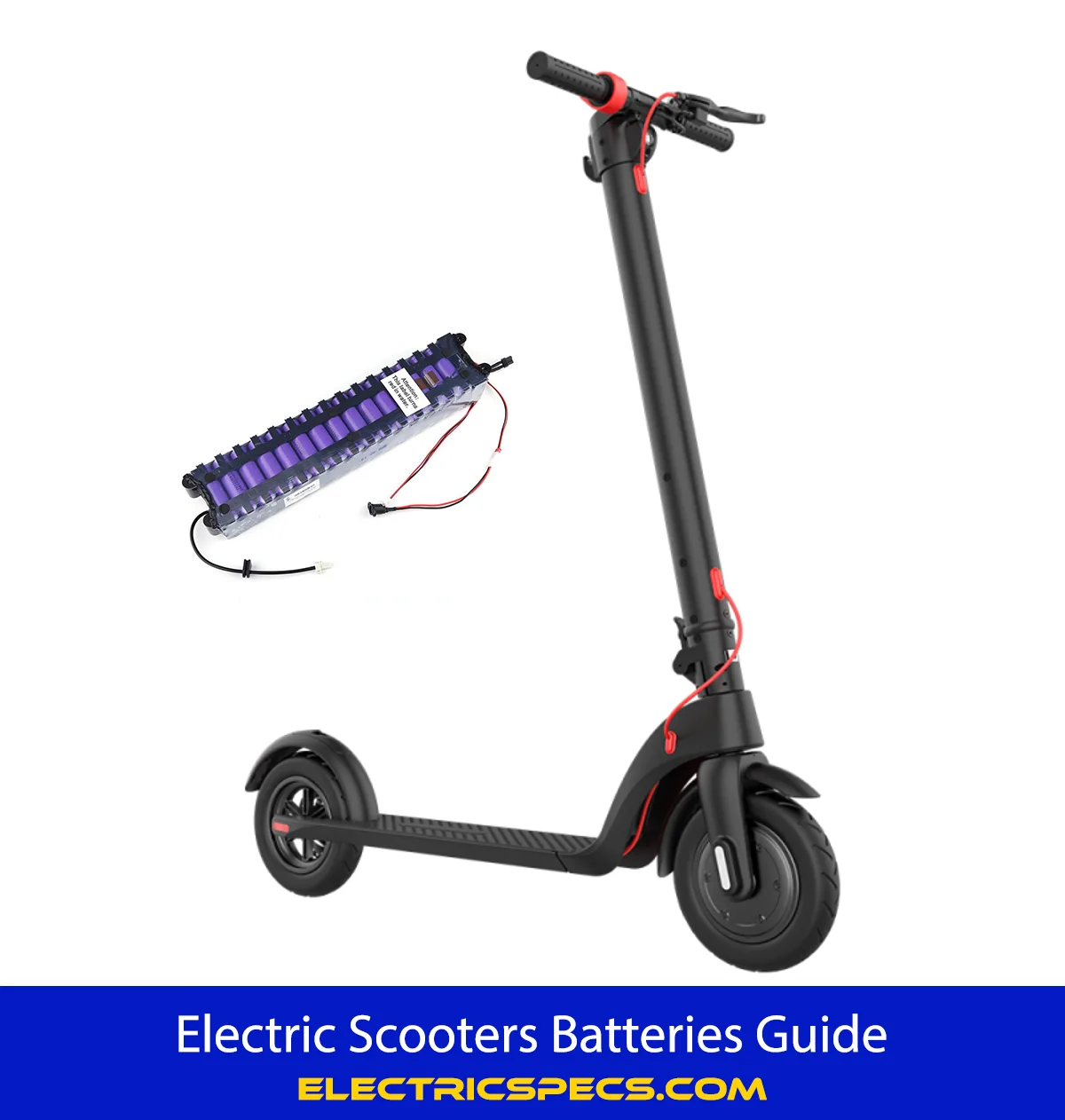
Click the arrow below to hide Table of Contents
Table of Contents
Electric Scooters Batteries General Guide
1. What kind of battery does an electric scooter use?
Electric scooters batteries not only differ in voltage and amperage: they are also different in their types and construction. The most common types of batteries for electric scooters are SLA batteries (sealed acid batteries), NiMH batteries (Nickel Metal Hydride batteries), and Li-ion batteries (Lithium-ion batteries or LIB).
When we think about an electric scooter battery, we all imagine a big battery located somewhere inside the electric scooter’s body. This is not exactly appropriate. Electric scooters feature batteries or battery packs. So let’s try to clarify these terms.
2. What is a 18650 li-ion battery pack?
A 18650 li-ion battery pack is a set of a number of batteries or battery cells. This is the first important distinction that we should make: while a cell is a single unit that converts chemical energy into electrical energy, a battery is a collection of cells.
A battery is more appropriately a battery pack composed of many cells with a central PCB (protective circuit) like a BMS (battery management system). They also feature a protective circuitry that has important functions live overcharge protection and load balancing.
The 18650 (18mm by 65mm) battery is a size classification of lithium-ion batteries and they are often used to power electric scooters.
If you’re interested to learn more about how to build your own 18650 Li ion battery pack, watch the video below.
3 What is a battery management system (BMS)?
The BMS, battery management system, is an electronic system that manages the battery: it monitors its state, it avoids overcharge, it balances it. It’s an essential part of a battery or battery pack.
As you may have noticed with this short introduction, electric scooter batteries are more than just chemical boxes that provide power for an electric motor. They are complex systems that determine the electric scooter quality and price. In this guide we gathered any information you need to know about this important feature.
Types of Electric Scooters Batteries
As we’ve mentioned above, the most common types of batteries you can find mounted on electric scooters are lithium-ion, sealed lead-acid, or nickel-metal hydride batteries. Let’s see each one of them in the details.
1. Sealed lead-acid battery
A lot of users will know this type of battery as the heavy one mounted in their car. The first electric scooters on the market used to utilize these batteries: they could generate a very high starting current and were very reliable, other than being cheap, but they were big and heavy.
Sealed lead-acid batteries are losing popularity because of their size and weight. However, they are not without advantages: they are extremely cheap and they are able to produce a high current immediately. These are the only reasons why they are still a feature in some cheaper electric scooters.
If you are opting for an electric scooter that features a sealed lead-acid battery, though, you should be careful to some aspects:
- sealed lead-acid are very sensitive to extreme heat and cold, so avoid leaving your electric scooter under the direct sunlight or storing it in a cold garage.
- When an SLA battery is charged incorrectly, it can explode and release toxic fumes. You should check the battery often, and if you notice some damage – like even a simple crack – replace the battery immediately.
There are two types of SLA batteries mounted in electric scooters: Gel batteries or AGM (Absorbed Glass Mat). AGMs are generally more powerful and cost-effective while gel batteries offer more longevity.
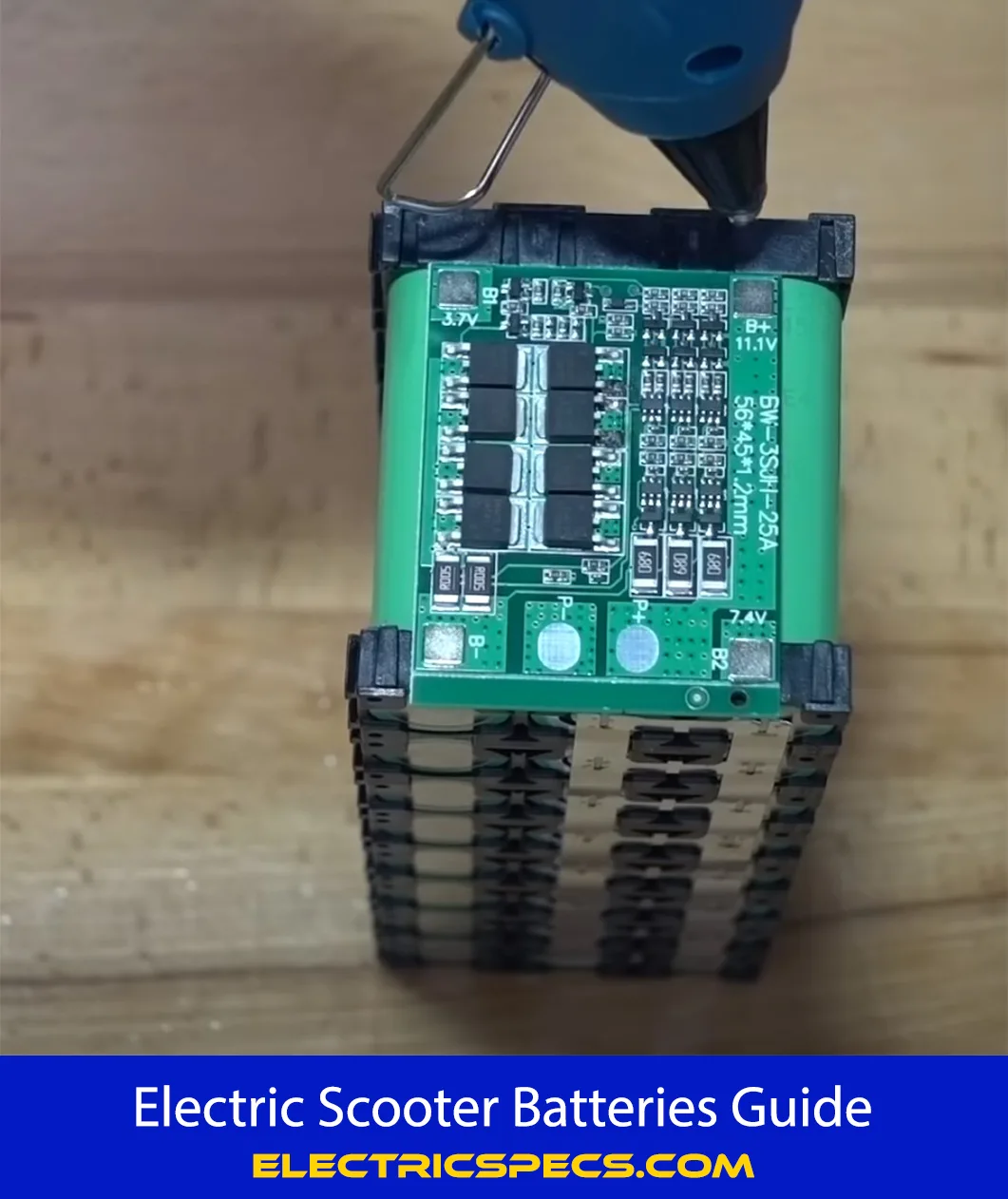
2. Nickel metal hydride battery
Nickel metal hydride batteries are considered the middle-grade batteries for electric scooters. They are lighter than sealed lead-acid batteries but also more expensive.
The first great advantage that this type of battery has compared to SLAs is that, when subject to puncture or damage, they don’t explode or leak toxic acid.
Nickel metal hydride batteries often come in battery packs. However, trying to replace one single battery in the pack is not recommended. You need to be careful with the battery’s polarity and if you make a mistake you risk having to throw away the entire pack.
The biggest drawback of Nickel-metal hydride batteries on electric scooters is that they are often specifically built for the specific electric scooter: this can become a problem when you need to replace it. You need to find the one 100% compatible with your e-scooter model.
3. Lithium-ion batteries
Lithium-ion batteries have been the last to be introduced in the world of electric scooters and they have become the most popular in no time, despite the fact that they are the most expensive. Why have they become so popular despite their price? Because they bring so many advantages:
- they are extremely lightweight, especially compared to the other two types of batteries commonly mounted on electric scooters.
- They are also little in terms of the volume occupied.
- They are long-lasting, both in terms of charge and life span. You don’t have to charge them as often as you should do with the other types, and they last much longer in terms of charging cycles (you charge them many many times before they stop functioning).
- They don’t require maintenance between uses.
Still, there a few drawbacks to lithium-ion batteries that you may want to be aware of.
- when punctured or damaged, they can explode
- If they are completely discharged they become unusable. When you see 0% on your electric scooters display and your device shuts off, the battery capacity is actually at 20%. This is done just because if you let it reach the actual 0%, your battery can no longer be recharged.
It might also be worth knowing about the lithium-ion batteries sub-categories, after all, you could find some of them in the newest electric scooters on the market:
- Lithium iron phosphate batteries: safer and longer-lasting than standard lithium-ion.
- Lithium Polymer batteries: flat batteries made for fitting in small spaces. Suitable for compact e-scooters.
How can I make my electric scooter battery last longer?
Most batteries’ life span is shorter than the electric scooter they are mounted on. It means that, often, the reason why your electric scooter stops working is because its battery – one single feature is dead. Taking good care of your battery can prolong the lifespan of your whole device, and taking good care of your battery means to follow some very simple tips.
1. Store your electric scooter in a dry and warm environment
Batteries are sensitive to temperature, so extreme heat or cold can damage them and shorten their lifespan. Always avoid leaving your electric scooter under the direct sunlight or inside your car when parked under the sun. On the other hand, avoid storing your electric scooter in extremely cold environments. For example, when you put it away for the winter, do not leave your electric scooter in your cold garage for the whole winter.
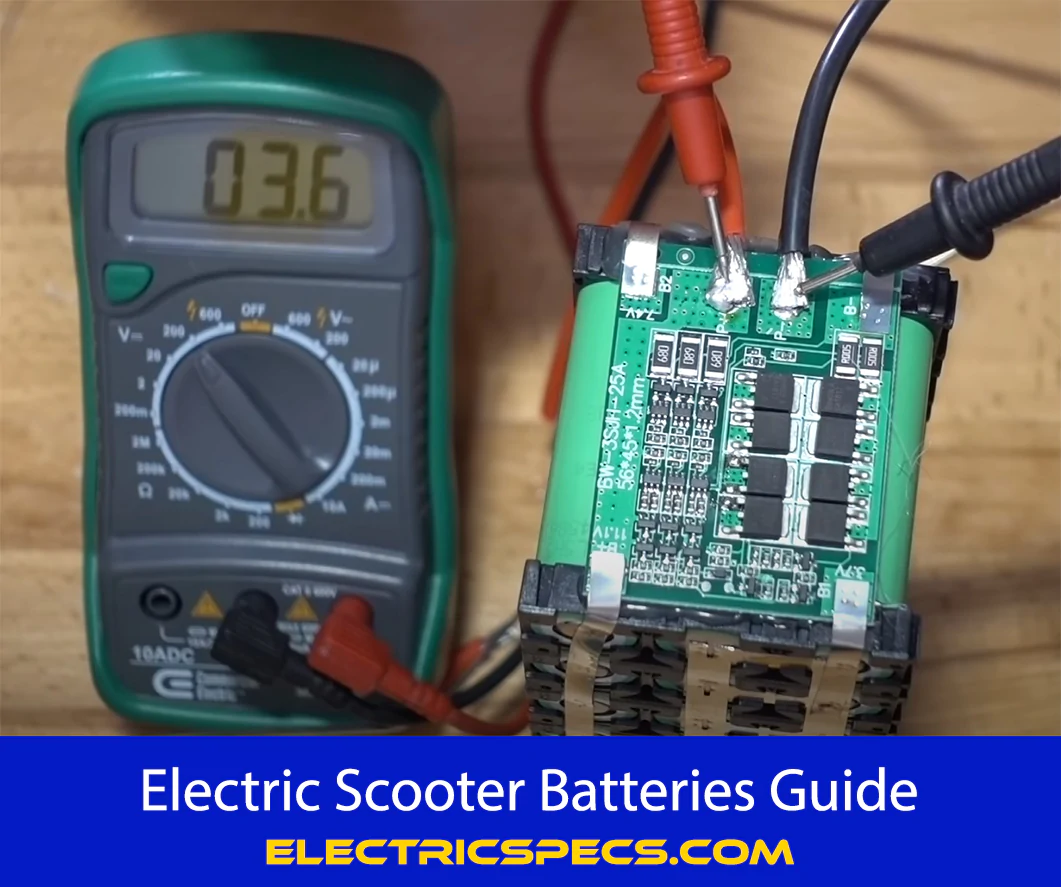
2. Use the appropriate charger for your battery
Always charge your electric scooter with the appropriate charger. The most appropriate of all would be the original one. If you lose it or need to replace it for whatever reason, avoid buying a cheap one. Cheaper chargers charge batteries very slowly and risk to overheat it: you’d be shortening your battery’s lifespan this way.
3. Keep your battery charged
Avoid totally depleting your electric scooter’s battery before charging it. Even though your battery still has some percentage of capacity left when you ride back home in the evening, charge your electric scooter the same. Most electric scooters feature lithium-ion batteries and, as we’ve mentioned above, when they are completely discharged it may happen that they simply can no longer be charged. So, letting your electric scooter’s battery reaching 0% you’d risk to completely discharge some cells and reduce your battery’s power and lifespan.
Bosch batteries recommends that in order to have a long Li-ion battery life, to avoid the following:
- Heavy/intense use of the electric scooter
- Storage above 30°C ambient temperature
- Long-term storage with the battery fully charged or fully drained
- Parking the electric scooter in direct sunlight for long periods of time
4. Charge your electric scooter battery before storing it for long periods
After a long ride, wait at least 20-30 minutes before charging your electric scooter. As we’ve said, batteries are sensitive to temperature, and charging it while it’s still hot would damage it and shorten its lifespan.
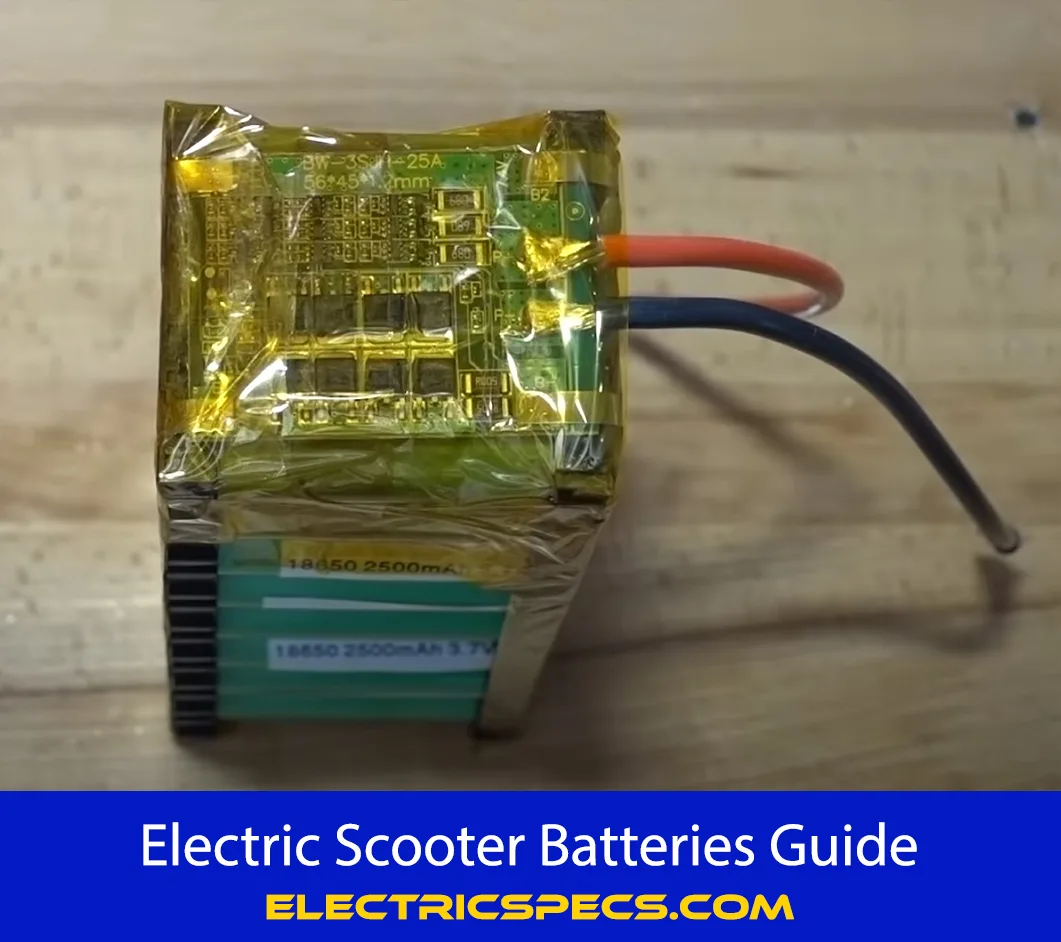
6. Never charge your battery if it’s damaged in any way
Some types of battery, and lithium-ion especially, can explode or result in a fire when charging inappropriately. So, if you notice any damage on your battery do not charge it but replace the battery on your electric scooter. For the same reason you shouldn’t leave your electric scooter charging overnight: you should be always supervising to avoid battery overcharge and the bad consequences it may have.
Electric scooter batteries questions and answers
1. Are electric scooter batteries safe?
In this guide, we’ve warned you enough against the risks of overcharging or inappropriately charging your electric scooter battery. Doesn’t it mean that batteries and electric scooters aren’t safe at all? Well, of course not. Those stories you may have heard of electric scooters bursting into fire because of a battery fault are always referred to as the cheapest, poorest-quality model. If you buy a good-quality electric scooter that comes with a 2272 Certification you can totally stay safe.
A 2272 Certification confirms that the product comforts to international fire and safety standards. So, if battery and electric scooter come with a 2272 Certification, it means that the products have been tested and that the tests have ensured their safe use even in the roughest conditions. Keep in mind that you should avoid these roughest conditions so you have nothing to be worried about.
2. What is the range of an electric scooter?
An electric scooter range depends on so many factors: the e-scooter model. The type of battery it mounts, the rider’s weight, the rider’s riding style, and more. A unique answer to this question can’t be done. What we can say is that for each electric scooter you’ll find a specific range, often – if not always – indicated in the product specification. The most affordable electric scooters feature a range of 20 miles, while more expensive models can reach even 60-70 miles with a single charge.
Even after you’ve checked for the electric scooter’s range – specific for that model – you should in any case keep in mind that even that number can not correspond to the actual range because the actual range always and will always depend on those factors we’ve talked about.
Also, the battery shouldn’t always be blamed for a short mile-range. You can have a powerful battery but a heavy frame and inefficient tire-pressure that may shorten the mileage. On the other hand, a less powerful battery doesn’t always correspond to a shorter mileage. The actual range depends on so many factors that an optimal electric scooter is the one that finds the perfect balance between all those factors.
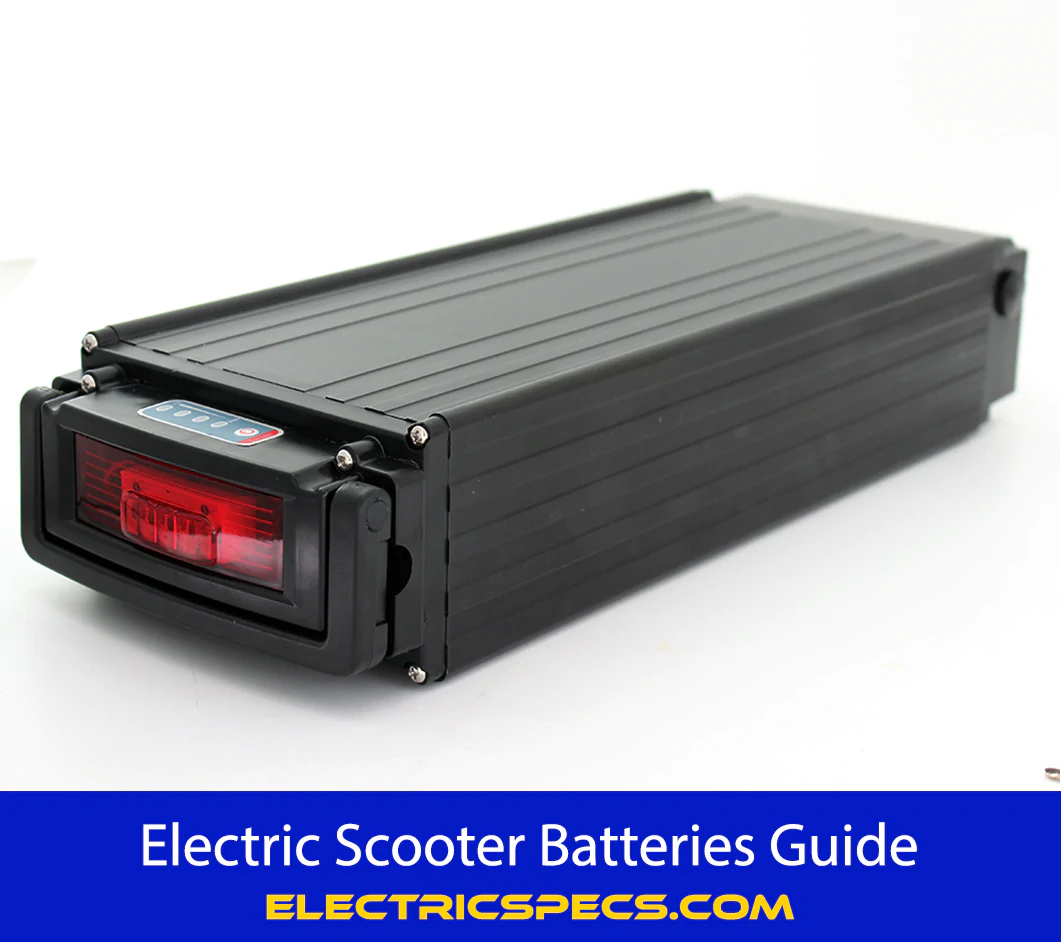
3. How long do electric scooter batteries last?
There are many factors that determine the electric scooter battery life. The way you ride your electric scooter, the type of terrain you ride on, your weight, and the care you take of your battery. We’ve seen that there ways of prolonging your electric scooter battery life. In any case, it’s hard to make your battery last longer than 4-5 years. We could say that no matter the use, the average lifespan of an electric scooter battery goes between 2 and 3 years.
4. How much does it cost to replace an Electric Scooter Battery?
Unfortunately is not that easy to find electric scooter battery packs replacements. The most common online marketers seem not to be selling them. Some Chinese manufacturers have them available on their online stores, though. You may need to wait some time, but this could be a good option. An electric scooter battery can cost between $150 up to $300. Avoid purchasing cheaper batteries for the safety reasons we’ve discussed above.
Conclusion
With this full guide on electric scooter batteries we’ve covered anything you need to know about them. Now you are able to make a safe and convenient purchase and you also know how to take good care of your electric scooter battery to make it last as long as possible.




